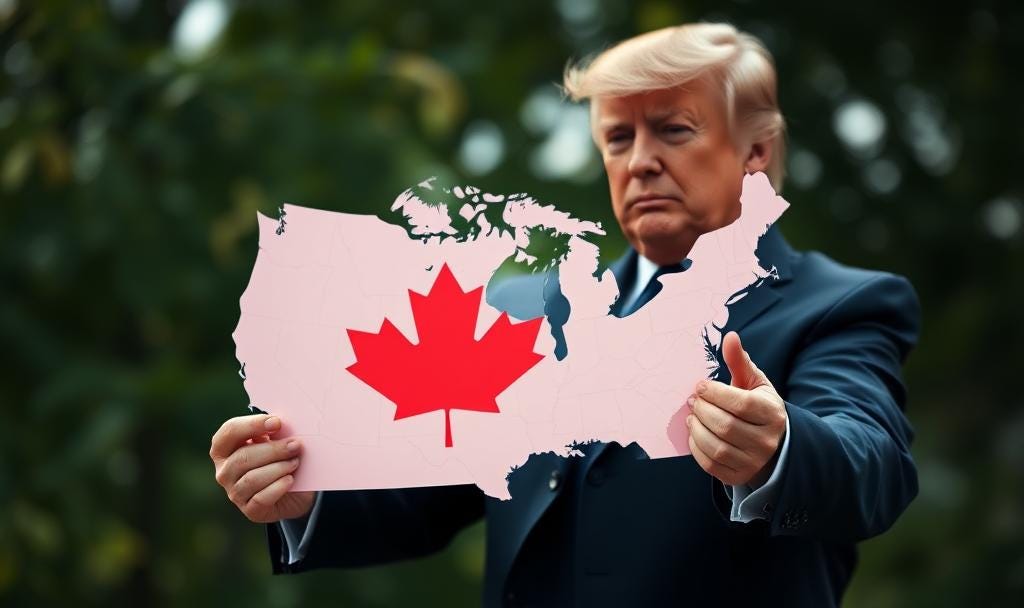The Annexation of Canada: A Love Story
After multiple hints and comments it began, as these things often did, with a speech that no one quite believed at first.
Standing in front of a giant map—one of those old pull-down classroom kinds, rumpled and curling at the edges—President Donald Trump gestured broadly at North America.
"Look at it!" he cried. "It’s a perfect country, but somebody drew a straight, artificial line! A long time ago! Many, many decades ago. Total disaster! Remove that line and we become the biggest country in the world. Bigger than Russia! Bigger is better. Everybody knows that."
He tapped at Canada, his finger smudging the laminated surface.
"Canada only works as a state. A great state. One of the greatest! Visuals — incredible visuals! Trees, lakes, ice — very good ice. Fantastic. Tremendous tourism potential."
His staff shifted uncomfortably behind him.
The Secretary of State whispered to the Chief …
Keep reading with a 7-day free trial
Subscribe to The Touchonian to keep reading this post and get 7 days of free access to the full post archives.



